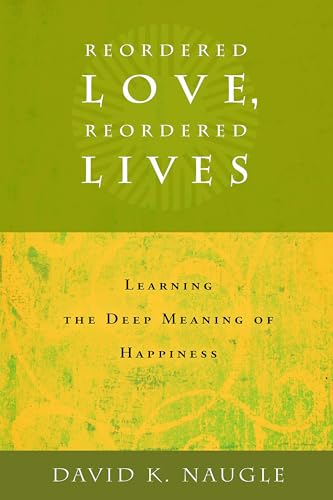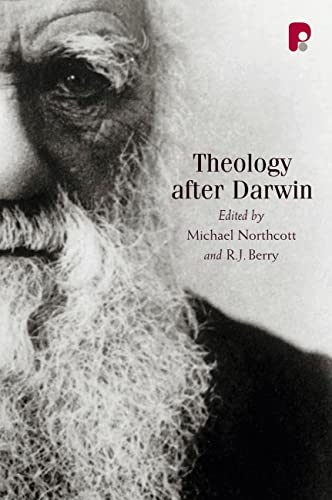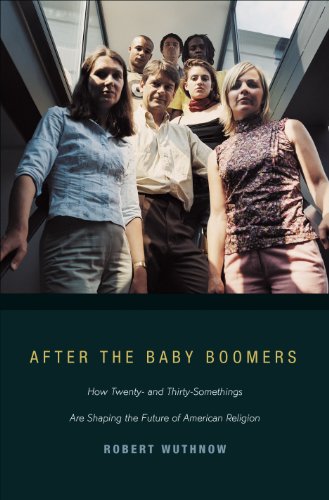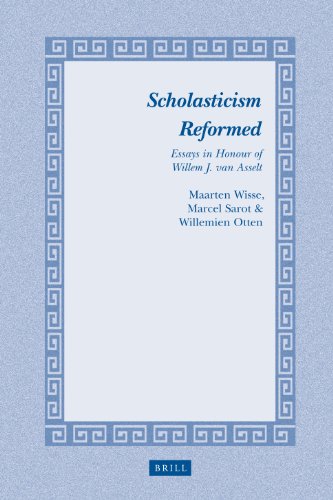Echoes of Scripture in the Letter of Paul to the Colossians
Written by Christopher A. Beetham Reviewed By Jason C. MeyerChristopher A. Beetham is Assistant Professor of Biblical Studies at the Evangelical Theological College and Assistant Professor of New Testament at the Ethiopian Graduate School of Theology, which are both in Addis Ababa, Ethiopia. This volume revises and expands his doctoral dissertation at Wheaton College Graduate School under the supervision of Greg Beale. This review begins by summarizing the book and concludes by assessing Beetham’s contributions to the ongoing study of the use of the OT in the NT.
This well-written book consists of fourteen chapters and three appendixes. Though the book is divided into chapters and not distinct sections, the present reviewer suggests that the book contains three sections of related material: (1) introductory matters (chs. 1–2), (2) specific echoes of the OT in Colossians (chs. 3–13), and (3) implications (ch. 14). What follows summarizes the contents of these three sections.
Section one has two valuable introductory chapters. The first chapter represents a history of research concerning the use of the OT in Colossians. Beetham shows the need for his work in that “no monograph or even journal article has probed the use of the Old Testament” in Colossians (p. 2). Scholars have noted that Colossians lacks any explicit quotations of the OT, which accounts for the dearth of studies on the use of the OT in Colossians. Beetham argues that many scholars concentrated on only explicit OT quotations before the 1990s, but in 1989 Richard B. Hays introduced biblical studies to the “literary-critical study of intertextuality” (p. 1). Hays’s work led to a swell of interest in investigating allusions and echoes of the OT in the New. Therefore, the author concludes that the time is right for a detailed examination of allusions and echoes in Colossians. Beetham notes that after finishing his own work, he was able to consult two studies that were not yet published during his dissertation work. Greg Beale and Gordon Fee independently carried out studies of intertextuality in Colossians, and Beetham identifies the places where his work and theirs both overlaps and differs (pp. 6–8).
Chapter two lays out some very helpful and detailed criteria for determining allusions and echoes. Beetham argues for an “author-oriented” approach over against a “reader-oriented” approach (pp. 12–13), even though he incorporates the insights of literary criticism, which often assumes an “audience-oriented” approach (p. 14). He also carefully defines quotations, allusions, and echoes. A quotation is “an intentional, explicit, verbatim or near verbatim citation of a former text of six or more words in length” (p. 17). Formal quotations have an introductory marker, while informal quotations do not have any introductory formulas (p. 17). An allusion is a “literary device intentionally employed by an author to point a reader back to a single identifiable source, of which one or more components must be remembered and brought forward into the new context in order for the alluding text to be understood fully” (p. 20). An echo is a “subtle, literary mode of reference that is not intended for public recognition yet derives from a specific predecessor. An author’s wording may echo the precursor consciously or unconsciously and/or contextually or non-contextually” (p. 24). Quotations, allusions, and echoes are alike in the sense that they have a specific precursor (p. 21).
Beetham also attempts to pinpoint the differences between these three terms. We could provide a synthesis of this section by saying that there are basically four main elements that make these three terms distinct: (1) the explicit nature of the reference, (2) the length of the reference, (3) the linear nature of the reference, and (4) the intentional nature of the reference.
First, concerning the explicit nature of the reference, the author follows John Hollander in establishing a “rhetorical hierarchy” for references depending upon how explicit the reference is. Therefore, the order of the hierarchy is quotation, allusion, and echo (p. 20).
Second, concerning length of reference, Beetham argues that a quotation consists of at least six words, but an allusion will have five or less words, even though they will still be verbatim from the original source (p. 17). If there are five words or less and there is a citation formula, then it is classified as a quotation, not an allusion (p. 17). Echoes do not have a length requirement.
Third, concerning the linear nature of the reference, a quotation will feature a linear phrase, but an allusion is more fragmentary in nature and sometimes exists as a “word cluster” of “several uncommon words, phrases, and/or images” from a source text that are “scattered in a paragraph or section of a new text” (p. 17). An echo is similar to an allusion, but may be even more fragmentary in nature.
Fourth, concerning the intentional nature of the reference, an echo may be a conscious or unconscious act on the part of the author and may not be recognized by the audience, but an allusion is an intentional act by the author and can and should be recognized by the audience. In fact, an effective allusion requires that parts of the original source must be brought forward into the new context or else the new text will not be “understood fully” (p. 20). An echo does not depend “upon the original sense of the precursor to be understood (p. 21),” but the original sense should still be studied because it “deeply enhances and colors the understanding of the new context” (p. 22) and sometimes reveals “unspoken hermeneutical presuppositions of the author concerning the original text” or clues concerning how the author understood the OT context (p. 24).
The second section (chs. 3–13) features eleven chapters that collectively identify eleven allusions and echoes. Each chapter follows the same format as the author proposes a specific echo, compares the textual versions, examines both the OT and NT contexts, studies the OT tradition in the rest of the NT and the early church, and then concludes with hermeneutical and theological reflections. Beetham argues for two allusions (Prov 8:22–31 in Col 1:15–20 and Gen 1:26–27 in Col 3:10) and nine echoes: (1) Gen 1:28 in Col 1:6, 10, (2) Isa 11:2, 9 in Col 1:9–10, (3) the Exodus motif in Col 1:12–14, (4) 2 Sam 7 tradition in Col 1:13, (5) Ps 68:16 in Col 1:19, (6) Deut 30:6 in Col 2:11, (7) Gen 17 in Col 2:13, (8) Isa 29:13 in Col 2:22, and (9) Ps 110:1 in Col 3:1.
The third section (chapter 14) unpacks the impact that Beetham’s work has for five distinct spheres of study: (1) an overall understanding of Colossians, (2) the relationship between the Testaments, (3) Paul’s use of the OT, (4) the authorship of Colossians, and (5) the relationship between Colossians and Ephesians.
It is very difficult to summarize Beetham’s book in a detailed way because of spatial constraints, but the summary section already highlighted what the present reviewer perceives as the work’s most important, far-reaching contribution: the definitions and methodological criteria of chapter two. The second section (chs. 3–13) constitutes the bulk of the book and contains many exegetical insights, but Beetham’s conclusions would be difficult to evaluate apart from the detailed methodology that the author establishes in chapter two. Intertextual studies are plagued by a lack of standardized terminology and methodology. Far too many studies of intertextuality never get around to defining the difference between quotations, allusions, and echoes, and too few studies offer methodological controls by which to test the proposed conclusions.
I found the author’s explanation of the differences between an allusion and an echo to be the most formative for my own thinking concerning intertextuality. Specifically, I was most helped by Beetham’s insistence that the intentionality of an allusion can be confirmed objectively by the need to bring something forward from the original text in order to understand the new text fully (p. 20). In other words, the original context contains the key to unlock the meaning of the new text, or else its meaning will remain concealed from the reader.
The only part of Beetham’s methodological criteria that I found lacking was his insistence that a quotation must consist of six words or more and an allusion must consist of five words or less. Beetham himself acknowledges that this criteria has been “arbitrarily set” (pp. 16–17). In personal communication with the author, he expressed his agreement with this critique, and he pointed me to the same critique found in RBL(12/2009) by Maarten J. J. Menken. He also affirmed the promising potential of Menken’s suggestion that a “quotation has to be a clause made up of at least a subject and a predicate.” I plan to adopt Beetham’s methodological criteria along with Menken’s proposed revision in future attempts to detect allusions and echoes. I would suggest that these criteria would be a helpful starting point for others working in this field.
Jason C. Meyer
Jason C. Meyer
Bethlehem College and Seminary
Minneapolis, Minnesota, USA
Other Articles in this Issue
Most of us, I suspect, develop fairly standard ways, one might even say repetitive ways, to appeal to the motivations of our hearers when we preach the gospel...
How to Write—and How Not to Write—A Review: An Appreciative Response to Reviews of Ancient Near Eastern Themes in Biblical Theology by Dempster and Edgar
by Jeffrey J. NiehausI want to thank Themelios for the unusual opportunity to interact with two reviewers of my book Ancient Near Eastern Themes in Biblical Theology...
Parallels, Real or Imagined? A Review Article of Jeffrey J. Niehaus, Ancient Near Eastern Themes in Biblical Theology
by William EdgarWhen I came to Westminster Theological Seminary in Philadelphia as a young student in the 1960s, two things struck me...
Why Evangelicals Should Ignore Brian McLaren: How the New Testament Requires Evangelicals to Render a Judgment on the Moral Status of Homosexuality
by Denny BurkIn 2006 on Christianity Today’s leadership blog, Pastor Brian McLaren urged evangelical leaders to find a “Pastoral Response” to their parishioners on the issue of homosexuality...
A Member of the Family or a Stranger? A Review Article of Jeffrey J. Niehaus, Ancient Near Eastern
by Stephen DempsterWe cannot overstate how important knowing the context is for understanding the significance of any communication, whether that is a simple word, sentence, paragraph, larger text, sign, photograph, or cultural cue...







